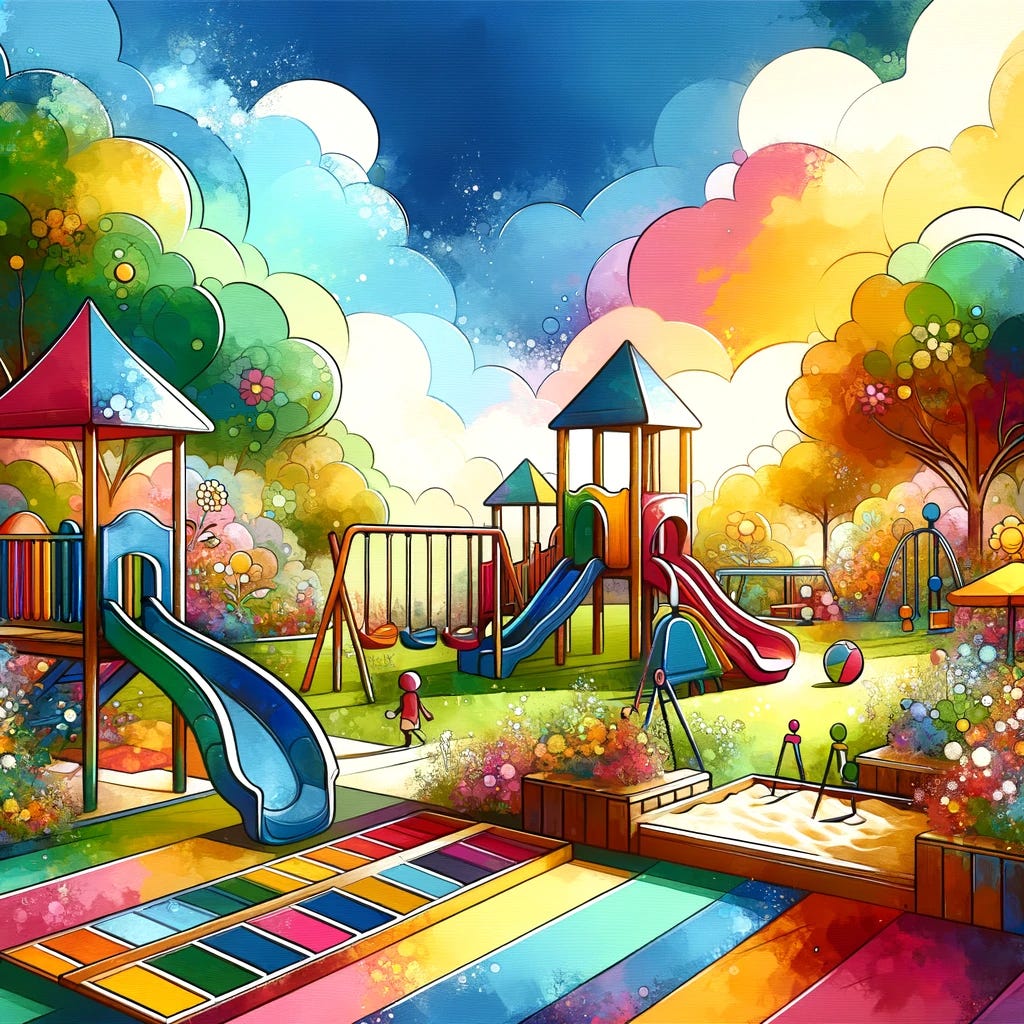While jargon mostly stands in the way, every domain of work has some key terms that get unanimously adopted and just make it easier to talk about the same thing. This is true for building products too.
As an engineer learning the ropes of product management and growth, understanding these terms has been immensely helpful. It took its fair share of time though. I asked GPT4 to succinctly explain some of these key terms a while ago and was impressed by the simplicity of the example. Sharing it here in this post, hoping its helpful to someone!
Example
Assume the product in this example is a playground for local kids in the neighbourhood. Now let’s define some key product terms from your users’ perspective:
Stickiness
Suppose you’re a kid in the neighbourhood. Stickiness is how often you and your friends want to go back to the playground. If there's something special like a giant slide or a cool treehouse, it makes you want to go back often. If the playground is sticky, it means you find something fun there that makes you want to visit many times.
Engagement
Now, engagement is about what you do once you're at the playground. Do you just sit on a bench, or do you try all the swings, slides, and maybe play a game of tag with your friends? If you and your friends are running around, trying everything and having lots of fun, that means you're highly engaged with the playground.
Retention
Retention is like, over the summer, do you keep going back to the playground or do you get bored and stop going? If you keep returning to the playground week after week, that’s good retention. It means the playground continues to be a place you enjoy over time.
Activation
Imagine the first time you visit the playground, and you discover that giant slide that looks super fun. You climb up and slide down, and it’s a blast! This first enjoyable experience is like activation. It's that moment when you first find something cool in the playground that makes you want to come back. In the world of apps or websites, activation happens when you first find a feature or part of the product that you really like, and it makes you want to keep using the product.
Activation is a combination of three key moments. Let’s get into them.
Setup Moment
When you first arrive at the playground, you notice a board with rules listed like "wait your turn," "no pushing," etc. You quickly understand what's allowed and what's not. This setup helps you know how to navigate the playground safely, similar to how users set up an account or configure settings in a new app to get started.
Aha Moment
After a few visits, you discover the giant slide and realize how thrilling it is to slide down. This discovery excites you and makes you want to come back to the playground again and again. Just like in a digital product, this is the moment you realize the value or fun the playground offers, encouraging further exploration and interaction.
Habit Moment
Over time, going to the playground becomes a part of your Saturday routine. You look forward to it every week, and it becomes a regular part of your activities. Similarly, in digital products, this is the point where users incorporate the product into their daily or weekly routines, reflecting a formed habit.
Coming back to the definition of Activation:
You start with understanding the basic rules (Setup Moment), which allows you to explore the playground.
You then discover the exciting giant slide (Aha Moment), which significantly enhances your enjoyment and encourages you to return.
Eventually, your regular visits form a habit, making the playground a consistent part of your weekend routine (Habit Moment).
This journey from initial setup to forming a habit illustrates the activation process, demonstrating how the playground (or a digital product) engages you progressively over time, making you a regular visitor (or user).
Acquisition
Imagine if a colorful poster about the playground caught your eye one day while you were walking with your mom. The poster convinced you to visit the playground the next weekend. This is like acquisition, where new users come to check out a product because they heard about it or saw it advertised somewhere.
Resurrection
Let's say after the summer, you got a bit bored with the playground and stopped going. Winter came, and you stayed indoors mostly. But then, when spring arrived, the playground got a brand new trampoline. Your friend told you about it, and you decided to go check it out. You found the trampoline super fun, and now you're back to visiting the playground regularly again. This comeback is like resurrection. In apps or websites, resurrection happens when someone who stopped using the product returns because of a new feature or a significant update.
Referral
Now, if you loved the playground so much that you told your friends at school about it, and they decided to visit too, that’s like a referral. In digital products, referrals often come with incentives, like if you tell your friend about an app and they sign up, you both might get some bonus points or a freebie.
Churn
Suppose after a while, the playground becomes less exciting, or maybe it gets too crowded, so you stop going. This is similar to churn in the digital world, where users stop using a product or service after a while for various reasons.
Hope this helps! Let me know what you think.
